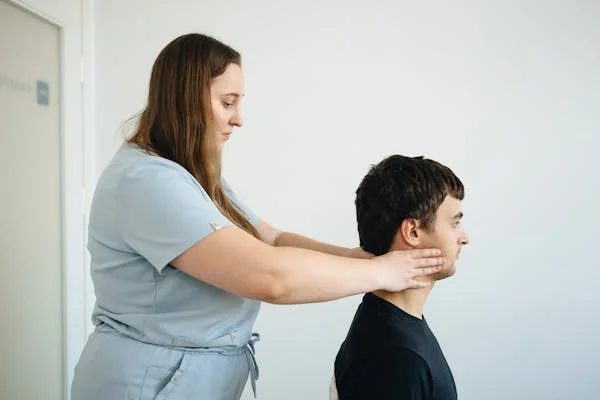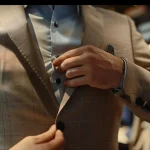Introduction
Pedacustic is a fascinating term that fuses “pedo” (related to feet) and “acoustic” (relating to sound). In simple terms, it refers to the perception of sound through the feet. It goes beyond traditional hearing, incorporating the sensation of vibrations and sound waves that are transmitted through the ground to our feet. This sensory experience is not only intriguing but also connects us more deeply to the environment around us. In this article, we will dive into the science behind pedacustic, its benefits, and how it can be incorporated into daily life.
What Is Pedacustic?
Pedacustic, as a concept, is the experience of perceiving sound through the feet. This idea might seem unusual at first, as we typically think of hearing as something that involves the ears. However, our feet, with their many nerve endings and their ability to sense vibrations, can become a unique channel for sound perception. Pedacustic allows individuals to feel sound vibrations through surfaces they walk on, from the soft earth to hard concrete, all of which carry distinct sensory information.
The Science of Pedacustic
Pedacustic is primarily about vibration detection. The soles of our feet are packed with sensory receptors that help us detect pressure, temperature, and vibrations. These receptors are highly sensitive, allowing us to “hear” or “feel” vibrations in the ground when we walk. This sensitivity is key to the pedacustic experience, enabling the feet to detect low-frequency sound waves that are often imperceptible to the human ear.
When walking barefoot, different surfaces—like grass, sand, or soil—carry unique frequencies of vibration. These vibrations are felt in the feet, giving a tactile experience of sound. The brain interprets these sensations, creating a rich understanding of the surrounding environment.
The Role of Vibrations in Pedacustic
Vibrations are the foundation of pedacustic. All sounds, regardless of their pitch or volume, generate vibrations that travel through the ground. For example, when you step on soft soil, the pressure from your foot creates slight vibrations in the ground. These vibrations travel through the earth and are felt by the nerve endings in your feet.
These vibrations are often low-frequency, meaning they are felt more intensely than heard. They also carry different textures depending on the surface you walk on. The experience of walking on different textures helps enhance your connection with the surrounding environment, creating a multi-sensory experience.
Types of Vibrations That Can Be Felt Through Pedacustic
- Low-Frequency Vibrations: These vibrations are typically felt more than heard. They are often produced by heavy movements or machines, such as the rumble of a truck or the movement of a train.
- High-Frequency Vibrations: These are lighter vibrations, often imperceptible to the human ear but noticeable through your feet when walking on sensitive surfaces like glass or metal.
- Natural Vibrations: Nature itself produces vibrations that can be felt underfoot, such as the rumbling of thunder, the sound of wind blowing through trees, or the rhythmic waves of the ocean.
The Benefits of Pedacustic Experiences
Experiencing pedacustic has numerous benefits, both physical and mental. Let’s explore how incorporating this unique sensory experience into your life can improve your overall well-being.
Enhanced Connection to the Earth
Walking barefoot on natural surfaces is one of the simplest ways to enhance your connection to the earth. The vibrations that travel through the ground give you a deeper understanding of your environment. Whether you’re walking on grass, sand, or soil, each surface carries different vibrations that provide sensory feedback to your body.
By tapping into the sensations underfoot, you become more in tune with the earth’s natural rhythms. This heightened awareness can lead to a greater sense of peace and mindfulness, fostering a more grounded, connected feeling.
Stress Reduction and Relaxation
One of the most powerful benefits of experiencing pedacustic is its ability to reduce stress. Walking barefoot allows you to focus on the sensations in your feet, which brings your attention away from mental stressors and back to the present moment. This practice is similar to mindfulness, helping you to relax and reduce anxiety.
By walking on soft grass or sandy beaches, you can enhance the calming effects of nature. The slow, rhythmic feeling of the earth beneath you promotes relaxation, lowering cortisol levels and helping you feel more at ease.
Physical Benefits of Walking Barefoot
- Improved Posture: Walking barefoot encourages proper alignment and engages muscles in the feet and legs that are often neglected when wearing shoes.
- Enhanced Balance: Without shoes, you are more attuned to your body’s balance and weight distribution. This increases foot strength and overall coordination.
- Stronger Feet: Walking barefoot helps strengthen the arches of your feet, improving their strength and flexibility.
How to Experience Pedacustic: Practical Tips
To fully immerse yourself in the world of pedacustic, here are some practical steps you can follow to experience sound through your feet.
1. Walk Barefoot in Natural Environments
One of the best ways to experience pedacustic is to walk barefoot in areas with different natural surfaces. Parks, beaches, and forest trails are excellent locations to connect with nature and experience the tactile sensations of various surfaces. Take the time to feel the vibrations as you walk over grass, dirt, or stones. Notice how each surface feels differently under your feet.
2. Focus on the Vibrations
As you walk, pay attention to the subtle vibrations traveling through the ground. These vibrations might be faint at first, but with time and practice, you’ll become more attuned to them. Each step you take is an opportunity to feel the earth beneath you and become aware of the rhythms of the world around you.
3. Walk Slowly and Mindfully
The more slowly and mindfully you walk, the more you can engage with the sensation of the ground beneath your feet. This mindfulness practice can help you better tune into the vibrations and sounds, making the experience more enriching. Avoid distractions, such as music or phones, so you can focus entirely on the sensory experience.
4. Try Different Surfaces
Every surface you walk on has its own unique vibration. For example, the soft, spongy feel of sand contrasts with the firm, jagged feeling of gravel. Each surface carries a different frequency and texture of vibration, making the experience richer and more varied. Experiment with different terrains to fully explore the world of pedacustic.
How Pedacustic Can Be Used in Modern Design and Technology
Pedacustic is not just a natural phenomenon; it has practical applications in modern technology and design. In fields such as architecture, wellness, and virtual reality, the concept of sound felt through the feet is gaining popularity.
Pedacustic in Architecture
Architects and designers are increasingly exploring ways to incorporate vibration-based sound experiences into buildings and public spaces. For instance, in public parks or urban landscapes, architects may use vibrations to enhance the sensory experience of an environment. These vibrations can be used to create interactive experiences, such as using the ground itself to transmit sound effects or music.
Pedacustic in Virtual Reality (VR)
In VR and immersive gaming environments, the concept of pedacustic is gaining traction. By simulating the sensation of walking on different surfaces, game developers can create more realistic and immersive experiences for users. VR systems may include foot sensors or vibrating floors that mimic the feeling of various terrains, adding another layer of realism to virtual worlds.
Potential Drawbacks of Pedacustic
While pedacustic offers many benefits, it is essential to be mindful of certain drawbacks. In some cases, walking barefoot on hard surfaces for extended periods can lead to discomfort or injury. Furthermore, some individuals may have heightened sensitivity to vibrations, which could lead to overstimulation.
It is essential to listen to your body and be cautious when walking barefoot in unfamiliar environments. If you feel any discomfort or pain, it’s important to stop and assess the situation.
Conclusion:
Pedacustic is a unique and intriguing way to connect with the world beneath our feet. By walking barefoot on different surfaces and paying attention to the vibrations traveling through the ground, we can enhance our mindfulness, reduce stress, and improve physical health. Whether in nature or through technological advancements, pedacustic offers a new and exciting way to experience the world.
Take the time to walk barefoot in natural environments, focusing on the subtle vibrations underfoot. Through this practice, you will gain a deeper understanding of your surroundings and foster a more grounded, mindful way of being.
FAQs
What is pedacustic?
Pedacustic refers to the perception of sound and vibrations through the feet, typically experienced when walking barefoot on various surfaces.
How do I experience pedacustic?
To experience pedacustic, walk barefoot on different surfaces like grass, sand, or gravel, and focus on the vibrations and sensations felt through your feet.
What are the benefits of pedacustic?
Pedacustic helps enhance your connection to nature, reduces stress, improves posture and balance, and strengthens the feet.
Can pedacustic be used in technology?
Yes, pedacustic is used in virtual reality and architectural designs to enhance sensory experiences through vibrations and tactile feedback.
Are there any drawbacks to pedacustic?
Walking barefoot on hard surfaces for long periods may cause discomfort or injury, and some individuals may have heightened sensitivity to vibrations.
Is pedacustic related to mindfulness?
Yes, pedacustic encourages mindfulness by focusing attention on the sensations in the feet, promoting relaxation and stress reduction.





